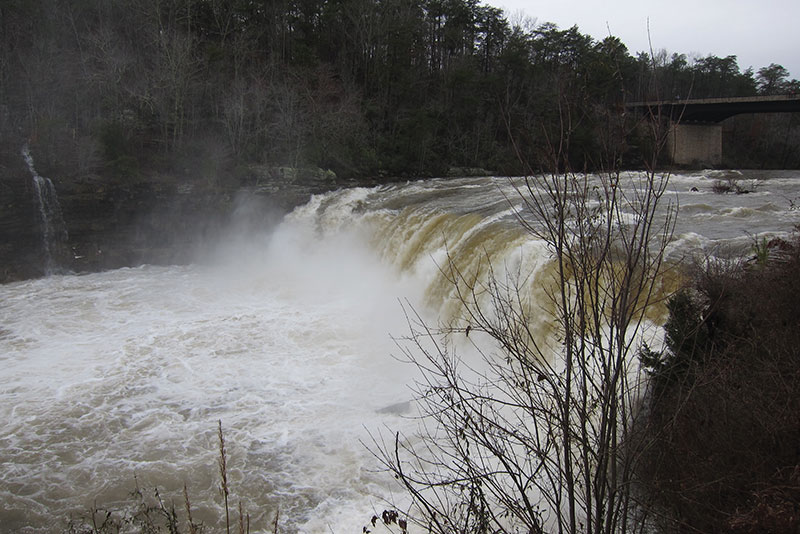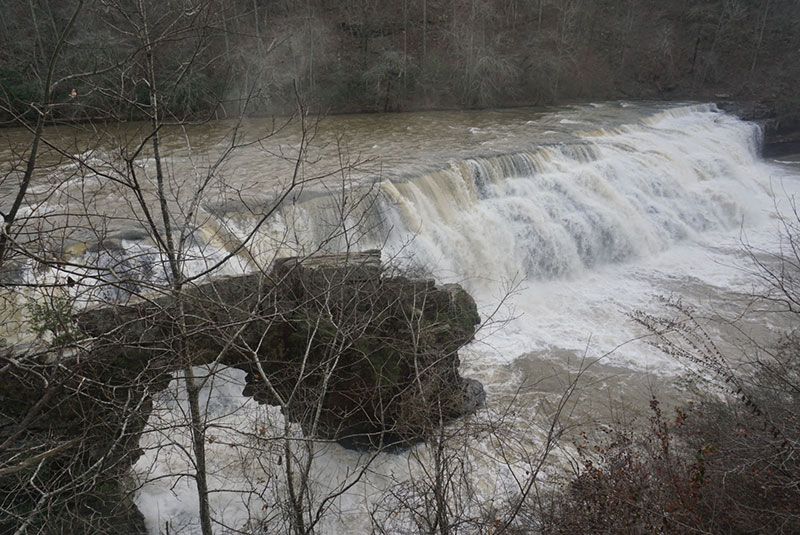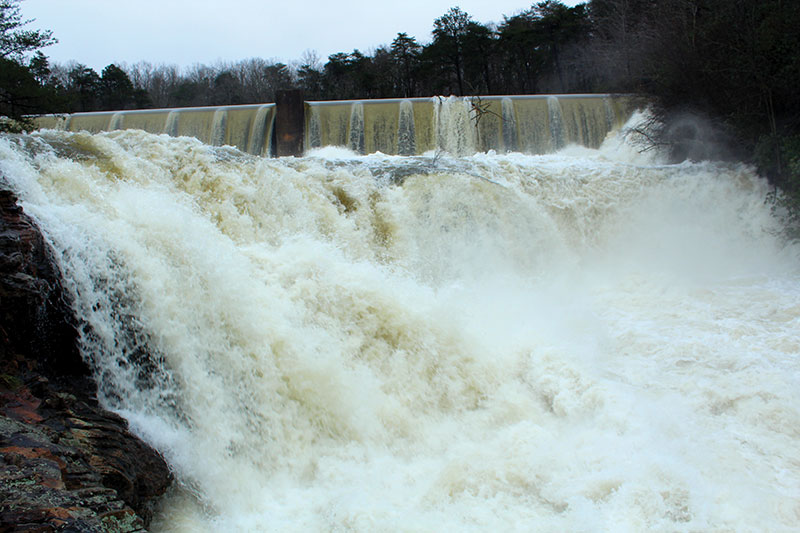


By Tyler Pruett
tyler@southerntorch.com
DEKALB COUNTY, Ala.—People across Alabama and throughout most of the eastern United States experienced a very warm, soggy Christmas this year. No area of the state was able to avoid the massive rainfall, but which hit south central and north Alabama was hit the hardest. Even areas in the central part of the state which received the least amount of precipitation still averaged 2 inches, with the highest amount recorded in the state being over a foot. In Dekalb County, over 8 inches of rain was reported in Ider from Dec. 21-26. According to the Dekalb County Emergency Management Agency, the flooding affected roads and bridges throughout the county, along with damaging homes. At press time, local authorities have not finished the official damage assessment, but it is expected to be significant. According to Dekalb County Deputy EMA Director Michael Posey, state and county relief funds depend on the amount of damage assessed in the county. “Funds to assist residents with recovery depend on the amount of damage meeting the county and state threshold,” Posey stated.
Several roads across the county were still closed due to the flooding as of noon Tuesday. County Roads 667, 712, 746, 739, 743, 498, and 636 were closed in District 1, while 139, 391, 70, 539, 411, 532, 136, 386, 365 were deemed flooded or impassable in District 2. District 4 also saw the closures of County Roads 266, 695, and 678. While no injuries were reported in Dekalb, statewide the round of storms injured many and are responsible for the death of three people. Rising floodwaters was the cause of all three deaths, with two of the casualties being a 22-year-old man and his five-year-old nephew who were swept away in their vehicle. Such tragedy could possibly have been avoided if the individuals were alerted of the weather conditions and the dangers of attempting to cross flooded roads. This is why the Dekalb County EMA encourages all citizens to participate in the “Alert Dekalb” program. “All the precautions and preparation won’t help you if we can’t first alert you,” Posey added.
Citizens can visit http://www.dekalbcountyal.us and sign-up for the alert system under the “EMA” section. A list of storm shelters and links to the agency’s social media pages can also be found here as well as contact information if you are seeking assistance with flood damage. Authorities will be able to determine what resources will be available to residents in the coming days. Posey also suggested those with damage to keep all records because, “FEMA requires extensive documentation to provide assistance or reimbursement.”
While this weather seems out of place during the winter season, forecasters predict more to come thanks to El Nino. El Nino is the formation of a large mass of warm water in the Pacific Ocean, which leads to warmer temperatures and heavy precipitation across the southern part of the United States, and generally occurs every few years. This year’s event is poised to be the strongest on record. While we experienced plenty of unseasonably warm and wet weather last week, meteorologists predict January and February to be the peak of El Nino, with conditions persisting until spring.




